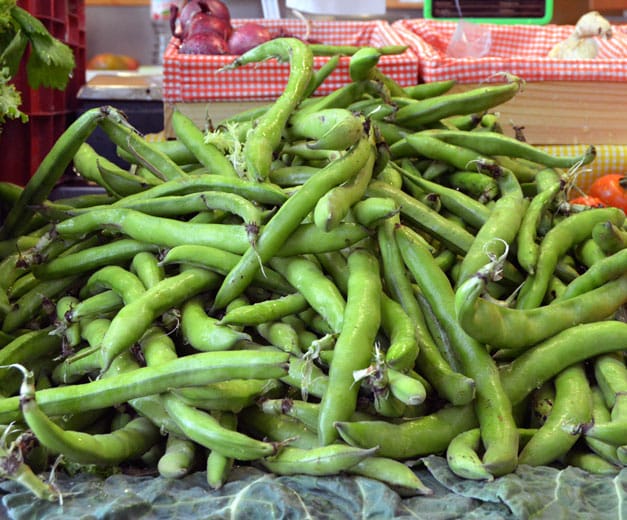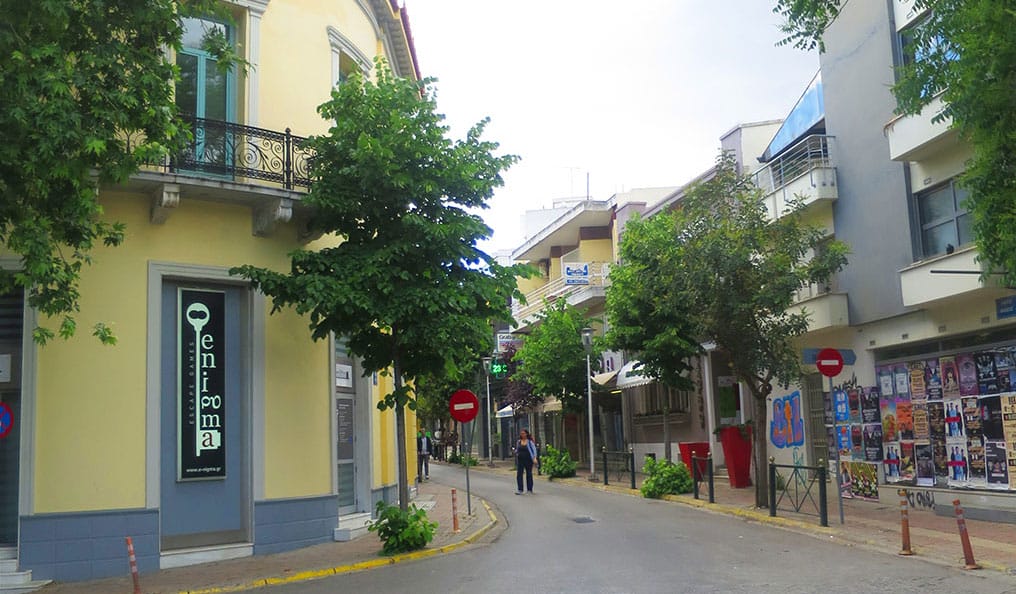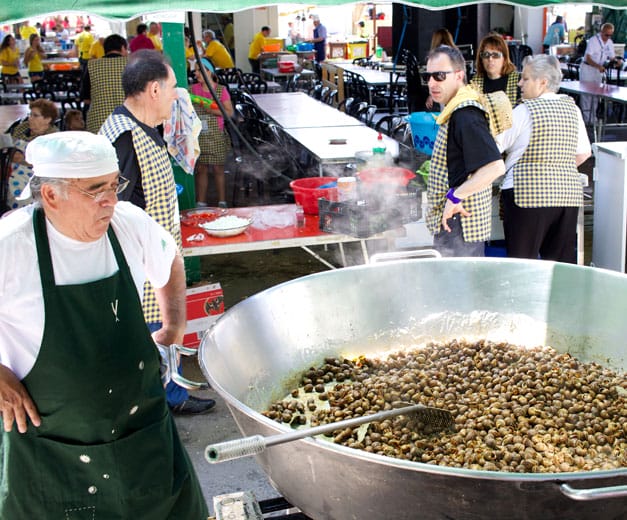The reach of globalization and industrial agriculture is such that you can find pretty much any kind of vegetable all year long at markets throughout Spain, but there are a still a few holdouts that arrive at very specific times of the year, and only for a fleeting moment. This is the produce we look out for, along with signs indicating the precise provenance. Artichokes from El Prat and the Ebro Delta are nearing the end of their all-too-brief visit, while the rare strawberries and wonderful peas of Maresme, on the coast of Barcelona province, have just begun appearing at market stalls. Others, such as the humble fava, arrive with less heralding but are no less welcome.
The original European strawberry was the woodland strawberry (Fragaria vesca), petite and wild, intensely flavored and, like the most precious gems, limited in number. Seeking maximum yields and profitability, the little red gem was replaced in the 18th century by the much larger F. ananassa, a hybrid of the two American species F. virginiana and F. chiloensis, and which we still find in markets today. Enthusiastic and careful breeding has since produced hundreds of cultivars.
The cultivars that come from Maresme are Albion, Gaviota and – most delicious – Charlotte, all enticingly ruby red and sweeter than other strawberries. Maresme has a microclimate that is particularly well suited to strawberry cultivation, and the plants are grown on slopes that receive a lot of sun in winter. But best of all, these strawberries don’t need long-term storage, transportation or time in the fridge, since they’re not destined to go far, and producers can harvest them at the perfect point of maturation.
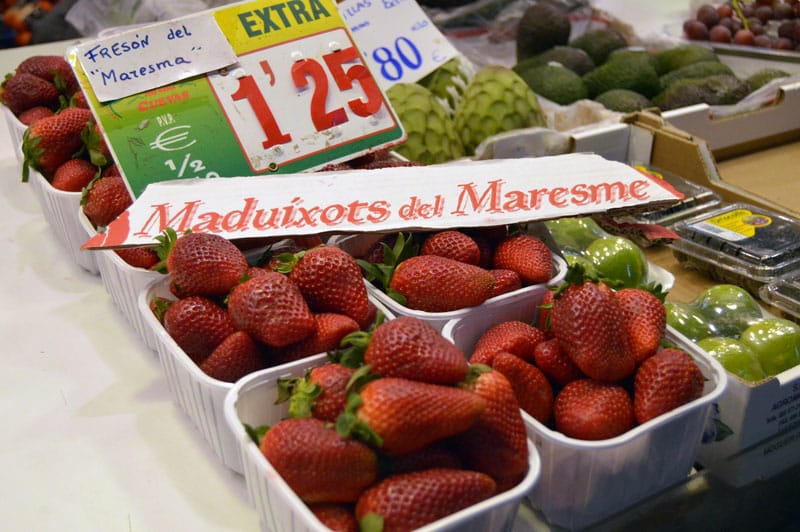
Despite the advantages of proximity and fame that goes back to the 1950s, the fruit is slowly disappearing from the market. The small family farms that grow this fruit are succumbing to economic pressures from industrial strawberry production in Huelva, in southern Spain, and Morocco. The best way to ensure that these farmers and the fruits of their labor survive is to eat the strawberries, which you can do at many restaurants right now. Until fall, La Pepita is serving a thrilling salad of gilt-head sea bream marinated with strawberries and pine nuts.
Maresme peas are grown primarily in the village of Llavaneres. They’re so incredibly fresh and sweet at their peak that they can even be eaten raw, as we did recently at Bar Ángel. Peas have been cultivated in Maresme since the 18th century and are said to get their profound sweetness from their proximity to the sea. Renowned cultivars from the area include Garrofal, Gantxo, Floreta and Negret, with the most famous being Pèsol Garrofal from Llavaneras, also known as “the green pearl of Maresme.” Pea season lasts from March to May.
Along with peas come their legume cousin, the fava. The old-fashioned broad bean has been cultivated throughout the Mediterranean for thousands of years. Favas were not only eaten but were also used as game pieces by the Romans and Greeks in ancient times, a legacy that lives on within the tortell de reis tradition.
These beans are also one of the stars of habas a la Catalana, a stew made of onion, a little lard, slices of black and white butifarra (a Catalan pork sausage), young garlic, tender broad beans, pepper, mint, bay and good white wine. We love the version of this rustic dish that is served at the modern and trendy bar-restaurant La Trini, in Gràcia. It comes in a cute casserole, just the right size to enjoy as a main course or to share as a tapa. Bodega Quimet also offers a great small plate of broad beans with Iberian ham and a poached egg, a lovely accompaniment to a glass of wine. You can find favas, favetes, habitas or habas tiernas in the markets in the pod or shelled; we recommend buying the former and shelling them at home. The extra effort is worth it to ensure the freshest, most tender beans – and to fully enjoy the pleasures of spring.
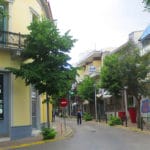 May 31, 2017 Athens’ Suburban Gem
May 31, 2017 Athens’ Suburban Gem
As you approach Maroussi by train, it is difficult to imagine that 100 years ago it was […] Posted in Athens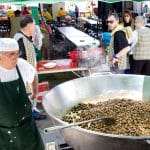 June 10, 2015 CB on the Road
June 10, 2015 CB on the Road
Each year at the end of May, more than 12,000 penyistes and 200,000 hungry visitors […] Posted in Barcelona July 29, 2015 CB on the Road
July 29, 2015 CB on the Road
Along the southwestern coast of Turkey, the vibrant blue waters of the Mediterranean […] Posted in Istanbul
Published on May 01, 2014
Related stories
May 31, 2017
AthensAs you approach Maroussi by train, it is difficult to imagine that 100 years ago it was full of mansions with lush gardens – some still standing today – olive orchards and vineyards. Situated 13 km north of Athens, Maroussi (AKA Amarousion) was the home of Spyros Louis, the first athlete to win the modern…
June 10, 2015
BarcelonaEach year at the end of May, more than 12,000 penyistes and 200,000 hungry visitors devour 12 tons of snails in one mere weekend in the city of Lleida, the capital of Catalonia’s interior. The Aplec del Caragol (“Snail Gathering”) is now an internationally known gastronomic event of impressive magnitude. Just under two hours inland…
July 29, 2015
IstanbulAlong the southwestern coast of Turkey, the vibrant blue waters of the Mediterranean crash against dry, rocky mountains jutting from the water’s edge. For centuries, pilgrims and adventurers alike have scrabbled over the unforgiving terrain between Fethiye and Antalya known as the Lycian Way. Ruins dating back to Greek and Roman times nestle between the…







































